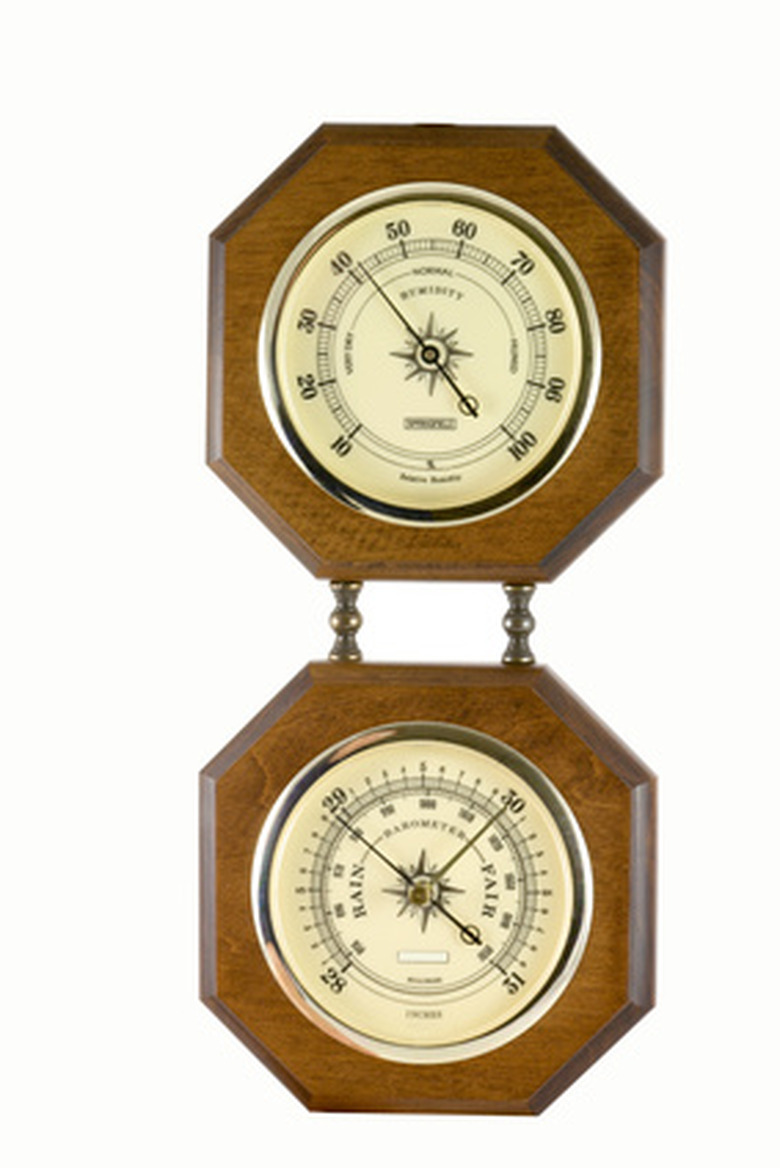Types Of Hygrometers
Hygrometers are instruments that measure humidity, or the amount of water vapor in the air. These devices are essential for weather measurement and forecasting, and for maintaining optimal storage conditions for moisture-sensitive materials.
Using a hygrometer to measure humidity levels inside your home can help you decide whether you need a dehumidifier. High levels of water vapor can promote mold growth and food spoilage, and may cause serious problems for people who have allergies.
Psychrometers
Psychrometers
This type of hygrometer uses two thermometers to measure humidity through evaporation. One is a wet-bulb thermometer and one is a dry-bulb thermometer. To measure relative humidity, the user wraps a wet cloth around the base of the wet-bulb thermometer. Whirling the device, or blowing air across the bulbs, causes the water in the wet cloth to evaporate, cooling the thermometer. The amount and rate of cooling depends on the amount of water in the air.
By noting the difference in temperature between the two thermometers, and referring to a standard chart, it's possible to calculate relative humidity.
A similar device called a hygrodeik includes a nomograph, which is a chart with a movable needle. The nomograph notes the two different temperatures, and the needle moves to the chart's corresponding temperature coordinates as evaporation proceeds. The needle's final position on the graph shows the relative humidity.
Electrical Hygrometers
Electrical Hygrometers
These hygrometers contain a semiconductor, which usually comprises a thin layer of lithium chloride. The semiconductor measures the change in electrical resistance as the amount of water vapor in the air changes. Humidors and other storage areas are often equipped with electrical hygrometers, in order to maintain humidity at the correct level and prevent excess water vapor from ruining sensitive materials.
Dew-Point Hygrometers
Dew-Point Hygrometers
Dew-point hygrometers measure humidity with a polished metal mirror that cools at a constant air pressure and water vapor content until moisture begins to condense on the surface. The temperature at which condensation forms is called the dew point. Meteorologists use the dew point to predict weather conditions associated with high humidity, like fog, snow, mist and rain. These conditions are most likely to occur when the dew point is identical to the air temperature.
Dew point gives a better overall picture of atmospheric water saturation than relative humidity, which depends on the temperature of the air, and changes when the air temperature changes. By contrast, the dew point temperature provides an absolute measurement of how much moisture is actually present in the air.
Cite This Article
MLA
Rohlin, Alexis. "Types Of Hygrometers" sciencing.com, https://www.sciencing.com/types-hygrometers-7153637/. 24 April 2017.
APA
Rohlin, Alexis. (2017, April 24). Types Of Hygrometers. sciencing.com. Retrieved from https://www.sciencing.com/types-hygrometers-7153637/
Chicago
Rohlin, Alexis. Types Of Hygrometers last modified March 24, 2022. https://www.sciencing.com/types-hygrometers-7153637/
